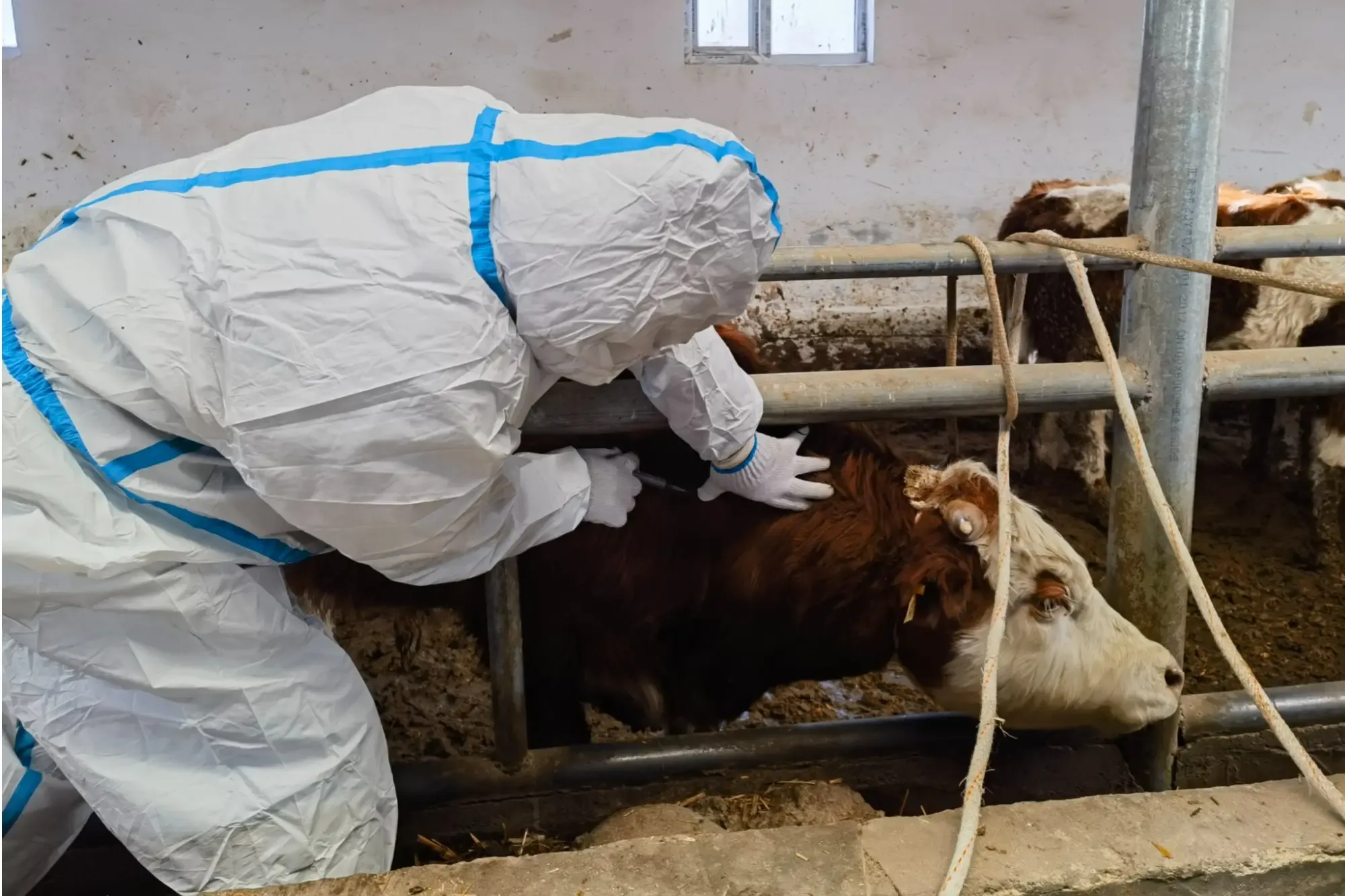Core cause:
The needle punctured a subcutaneous blood vessel during injection, or improper/ineffective pressure was applied after needle removal, causing blood to flow out and accumulate in the subcutaneous tissue.
I. Immediate Treatment Measures
Effective pressure (the most crucial step):
Timing: Immediately after needle removal.
Method: Use a sterile, dry cotton ball, gauze, or clean cloth to firmly press on the injection site. For larger animals like pigs, cattle, and sheep, sufficient pressure is needed to achieve hemostasis.
Duration: Continue applying pressure for at least 1-2 minutes. For aggressive, struggling animals, or individuals known to have poor clotting function, the pressure time should be appropriately extended.
Cold compress (suitable for early stages and when feasible):
Timing: When a hematoma is observed to be forming or has just formed (within 24 hours).
Method: Wrap an ice pack or cold water bag in a towel and apply it to the swollen area.
Challenges: Large livestock are often uncooperative, making this procedure difficult unless well-restrained. It is relatively easier to perform on piglets or lambs.
Effect: Constricts blood vessels, reducing further bleeding and swelling.
II. Follow-up Treatment and Absorption Promotion
Hot Compress (after 48 hours): Once the hematoma has stopped expanding (usually after 48 hours), a hot compress can be applied.
Method: Apply a warm towel or hot water bottle (wrapped properly to avoid burns) to the hematoma area.
Effect: Promotes local blood circulation and accelerates the absorption of the hematoma.
Frequency: 2-3 times daily, 15-20 minutes each time.
Gentle Massage (in conjunction with hot compress): After the hot compress, gently massage around the hematoma. Avoid rubbing the center area vigorously to prevent further damage.
Purpose: To aid lymphatic and blood circulation and dissipate the lumps.
Medication Adjuncts: For larger, difficult-to-absorb hematomas, consult a veterinarian. They may recommend topical medications to promote blood circulation, reduce swelling, and disperse nodules, such as ichthammol ointment or camphor liniment, applied to the affected area.
Important Note: Medication must be administered under the guidance of a veterinarian to avoid the drug entering the body through the injection site or causing irritation to the animal.
III. Prevention Measures (Reducing Future Occurrences)
Prevention is far more important than treatment.
Choosing the Appropriate Needle:
Length: Ensure the needle is long enough to penetrate the fat layer and reach the muscle. A needle that is too short may inject the medication into the fat layer, resulting in poor absorption and increased bleeding.
Thickness: Choose according to the viscosity of the medication. A needle that is too thick causes significant trauma, while a needle that is too thin makes injection difficult and prone to clogging.
Choosing the Correct Injection Site:
Choose areas with abundant muscle and fewer blood vessels and nerves, such as the side of the neck (most commonly used in pigs, cattle, and sheep) or the rump (cattle).
Avoid visible blood vessels; do not inject into areas where prominent veins are visible on animals with light-colored fur.
Standard Injection Procedures:
* **Restraining the Animal:** Ensure the animal is properly restrained to prevent struggle and subsequent needle abrasion of blood vessels and tissues.
* **Flying Needle Technique:** For pigs that cannot be properly restrained, the "flying needle" technique requires speed, accuracy, and decisiveness to minimize tissue damage.
* **Checking for Blood Return:** Before injection, slightly pull back the syringe plunger to check for blood return. If blood return is present, the needle is in a blood vessel and should be moved immediately.
* **Post-Needle Removal Management:** After needle removal, immediately apply firm pressure to the injection site with a dry, sterile cotton ball. This is the simplest and most effective preventative measure.
IV. Situations Requiring Caution and Veterinary Attention
* Most small hematomas will resolve on their own. However, if the following occurs, contact a veterinarian immediately:
* **Abnormally Large Hematoma:** Rapid swelling, becoming very hard, warm to the touch, and the animal exhibiting significant pain (e.g., avoidance, screeching, lameness).
* **Infection and Suppuration:** Ulceration and pus discharge from the injection site, accompanied by lethargy, loss of appetite, and fever. These are signs of a serious infection.
Functional Impact: If the hematoma compresses a nerve, it may cause lameness, difficulty standing, and other functional impairments.
Prolonged Irritation: If a hematoma shows no signs of absorption or shrinkage after more than two weeks, or even hardens, it may have become organized and requires surgical incision by a veterinarian.
Summary:
For blood clots after injection in livestock, the primary task is effective pressure after needle removal. For existing hematomas, apply cold compresses initially to prevent enlargement, and then apply warm compresses to promote absorption. Simultaneously, optimizing injection technique is fundamental to preventing such problems. As long as the animal's mental state and appetite are normal, and there are no signs of severe local infection, small hematomas are usually not a major problem.

Phone:+86-19138056813
Tel:+86-0371-88959050
Email:info@zsybio.com
Address:Zhengzhou City, Henan Province, China